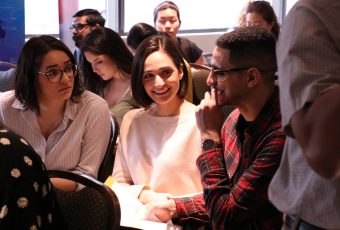UQ environmental studies say better urban planning can save koalas
The smart design of roadway and tree cover patterns in new urban areas is critical to maintain koala genetic diversity and improve survival prospects for the species, a study has found.

Mixing genes across wider areas is crucial for koala colony health and resilience, said Dr Jonathan Rhodes of the National Environmental Research Program Environmental Decisions Hub at the University of Queensland.
“By identifying koalas’ genetic connectivity—how their genes are distributed across landscapes—scientists can establish the viability of a population,” he said.
Urban growth has constantly encroached on koala habitats and often has isolated their populations into small groups with limited genetic diversity.
“Koala numbers have dropped massively over the past fifteen years in southeast Queensland, and further urbanization will affect them more,” said Dr Rhodes, who collaborated on the research with molecular ecologist Dr Rachael Dudaneic of Lund University in Sweden, and others. “We need smarter and more cost-effective ways to protect koalas while our cities continue to grow.”
Although koalas spend most of their time in trees, they travel between trees on the ground.
“When they move across landscapes to mate, they transfer their genes across the landscape too,” Dr Rhodes said.
The mixing of their genes across different areas is how they maintain genetic diversity, and is vital to the survival of the species. By identifying koalas’ genetic connectivity, the University of Queensland scientist can identify the main landscape features that influence this gene flow and what the impacts are on the viability of the species.
In the study, the NERP ED researchers examined koala samples collected across eight local government areas in southeast Queensland and explored how the amount of tree cover and roads affected gene flow patterns.
The team found that genetic connectivity dropped rapidly once the percentage of forest cover fell below 30 per cent. Areas with little or no forest cover had rates of gene flow three times lower than areas where forest cover was 100 per cent.
“We also found that the presence of highways reduces gene flow dramatically compared to areas without roads,” Dr Rhodes said. “If you throw in a major highway, genetic dispersal is greatly impeded regardless of how much forest cover is present.”
The findings suggest that koalas have a good chance of dispersing through an area if there is sufficient forest cover, Dr Rhodes said.
“To keep, create or maintain connections between koala populations, at least 30 per cent forest cover should be planned for.
“Also, as highways impede gene flow, habitat bridges and underpasses beneath highways need to be implemented as they can play an important role—particularly where highways are adjacent to koala habitats.”
“It’s vital that koalas are able to move across the landscape and that we do all we can in urban planning to ensure we do not isolate their habitats,” Dr Rhodes said, adding that this requires new strategies to be embedded into their urban planning practices.
“It’s crucial that we help koalas shift across highways, and also that we preserve and restore eucalypt foliage cover. Our study shows that understanding koalas’ genetic connectivity is a cost-effective and informative tool for conservation and urban planning.
The University of Queensland researcher commented that the sustaining gene flow is a major challenge when they are trying to minimize the impact of fragmentation on native wildlife, so when we design new urban areas, it’s important to understand the factors that influence gene flow.
UQ School of Geography, Planning & Environmental Management
Unique within Australian higher education, the multidisciplinary structure of the School of Geography, Planning and Environmental Management (GPEM) at the University of Queensland combines teaching and research coupling natural and built environments. With an integrated, interdisciplinary approach, GPEM helps educate tomorrow’s leaders facing important environmental issues such as climate change, urbanization and sustainable development. The school’s mission is to understand the processes, structures, and interfaces of natural and human systems and to use this knowledge to create and inform the next generation of knowledge leaders and to help shape policy, planning and management to enhance sustainability.
*

































Ask A Question
Ask us about your program of interest, or if you have a question about our services.
CONTACT US TODAY